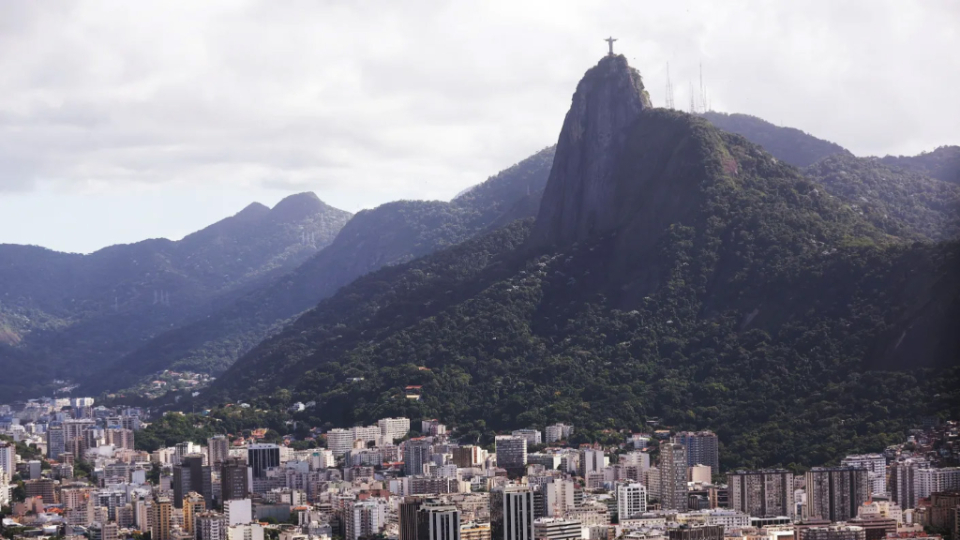
Brazil-Church-1
Christ the Redeemer statue in Rio de Janeiro, Brazil, on Friday, May 6, 2022. Photo by Jeffrey D. Allred, courtesy of Church News.Copyright 2022 Deseret News Publishing Company.
This story appears here courtesy of TheChurchNews.com. It is not for use by other media.
By Vanessa Fitzgibbon, Church News
As Brazil celebrates the 200th anniversary of its independence on September 7, members of The Church of Jesus Christ of Latter-day Saints can contemplate the role of the nation — one of three in the world with more than a million Church members — in the preaching of the restored gospel on three continents connected by the same language.
Brazil, ‘The Country of the Future’
During the 1978 São Paulo Brazil Temple dedication celebrations, a play titled “A porta” [The door], portrayed the gospel restoration in the American continent, with the following chorus:
Go, Columbus, open the curtain
of my eternal workshop
and get America out in the open.
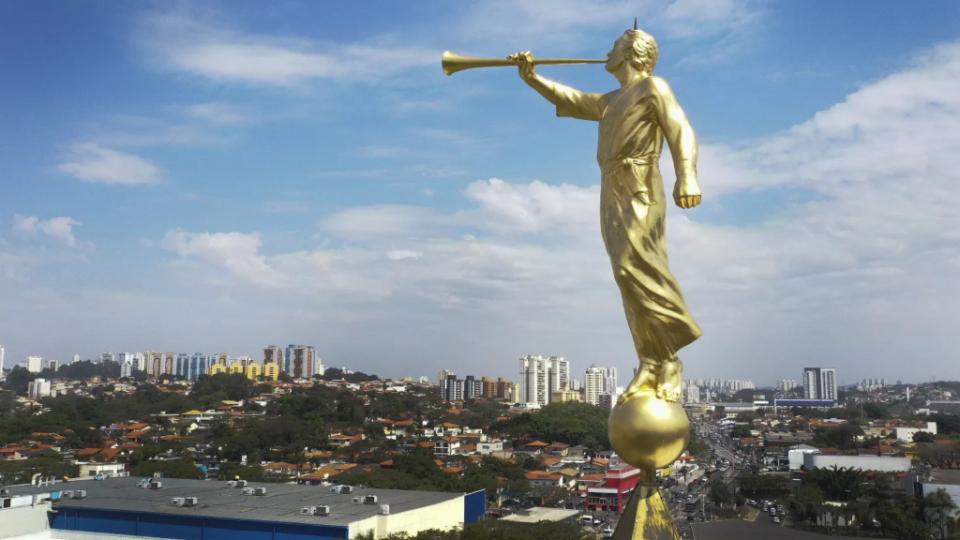
Brazil-Church-2
The São Paulo Brazil Temple and visitors center in São Paulo, Brazil, on August 31, 2019. Photo by Jeffrey D. Allred, courtesy of Church News.Copyright 2022 Deseret News Publishing Company.
In 1492, Columbus “opened the curtain” of part of the Americas, and eight years later, in 1500, Pedro Álvares Cabral introduced to the world a place compared to “a paradise on earth,” where everything that was planted would grow. This discovery proved to be true, throughout the centuries, both literally and symbolically.
At the beginning of the 19th century — on September 7, 1822, Brazil declared independence from Portugal. The newly established nation started to receive the influence of other countries, opening up to European immigration.
In 1913, German immigrants Max and Amalie Zapf became the first members of the Church in southern Brazil. The seed of the gospel had been planted, and, as predicted, the fruit was delicious and quickly spread throughout the country. Missionary work officially began in 1928, with the gospel being preached primarily in German, including pamphlets and the Book of Mormon, and the first chapel was built in 1932 in Joinville, Santa Catarina.
In February 1935, President Heber J. Grant called Rulon S. Howells to be the president of the first Brazilian mission. But no place had been designated as the headquarters for the newly created mission. On May 25, 1935, after having traveled through much of the country, President Howells chose São Paulo as the mission’s official headquarters. The Book of Mormon was translated into Portuguese and published in 1940, thus beginning the greatest Church growth recorded in South America at that time (see “From Acorn to Oak Tree,” by Frederick S. Williams and Frederick G. Williams).
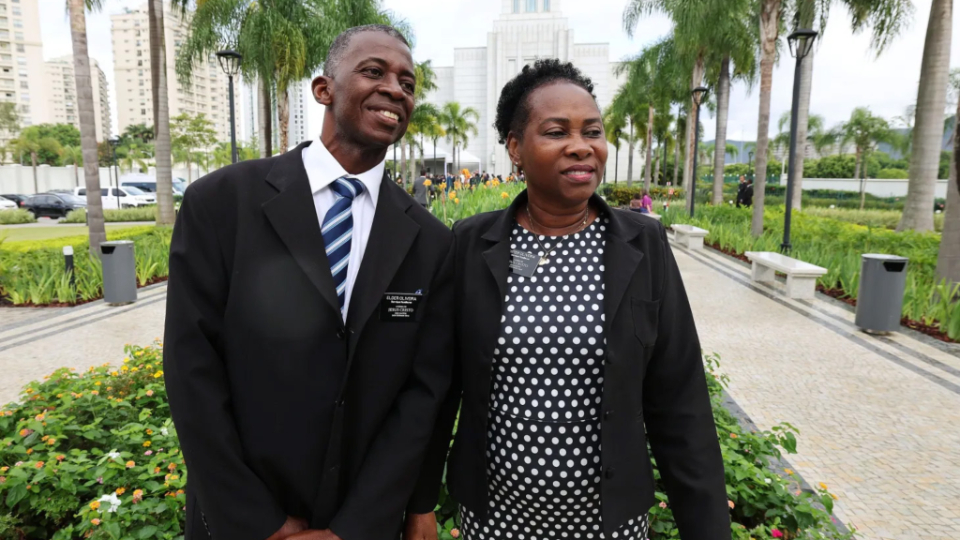
Brazil-Church-3
Edson and Marta Oliveira attend the Rio de Janeiro Brazil Temple dedication in Rio de Janeiro, Brazil, on Sunday, May 8, 2022. Photo by Jeffrey D. Allred, courtesy of Church News.Copyright 2022 Deseret News Publishing Company.
Despite missionaries being persecuted and a world war, Brazil proved to be the gateway to the gospel for Portuguese-speaking nations. In June 1978, with the revelation giving the priesthood to all worthy men of the Church, followed by the dedication of the São Paulo Temple in October, a new stage in the growth of the Church worldwide began.
The community created by the Portuguese discoveries sharing the same language facilitated missionary work, and Brazilians were able to take the message of the restored gospel to two other continents overseas.
As today the heart of Emperor Dom Pedro I literally returned to Brazil to celebrate 200 years of independence, another heart is worth mentioning. On his 2014 trip to the country, then-Elder Russell M. Nelson declared that “Brazil is what I call a part of the heart of the Church,” which has been shared with other nations across the world, taken by God’s own hand.
From Brazil to the Luso-African Community
The arrival of the first Church members in Portugal took place in the mid-1950s, when U.S. troops were stationed at various military bases across the country. But it wasn’t for almost a quarter of a century that the Church received legal recognition, on October 27, 1974. Soon after, four missionaries were transferred from Brazil to start preaching the gospel in the country. Many Portuguese members then said that Portugal had discovered the territory of Brazil, but later, Brazil had discovered the gospel for Portugal.

Brazil-Church-4
Lisbon Portugal Temple. Photo by Scott Taylor, courtesy of Church News.Copyright 2022 Deseret News Publishing Company.
In 1988, missionary work began in Cape Verde, the first Portuguese-speaking country in Africa to receive the gospel. In 2002 the Cape Verde Mission, created from the Portugal Lisbon South Mission, was announced by President Gordon B. Hinckley. The Praia branch was created on April 29, 2012, along with the first stake in the country. About 150 Cape Verdean missionaries have served their missions in various parts of the world, including Brazil. Church growth in the country culminated in the dedication of the Praia Cape Verde Temple on May 21, 2022, by Elder Neil L. Andersen.
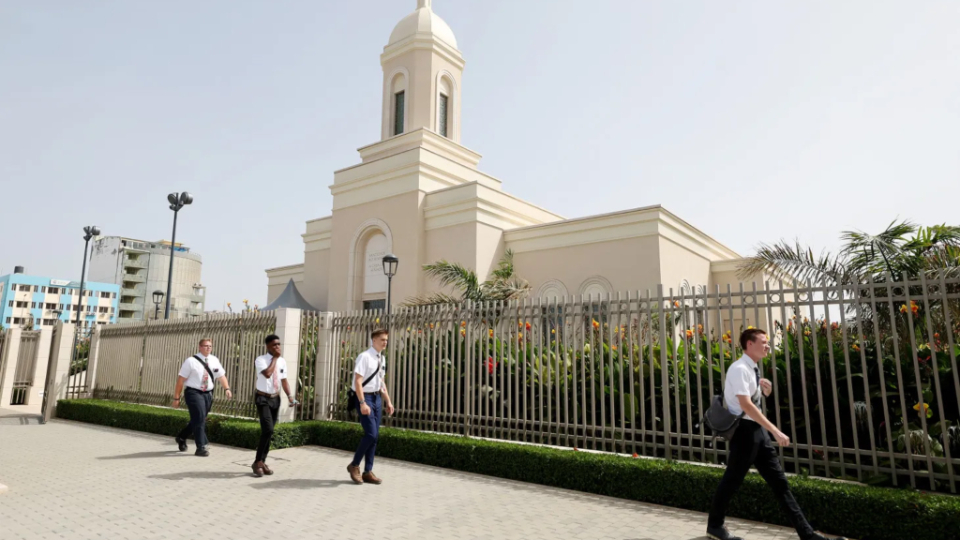
Brazil-Church-5
Missionaries walk past the new Praia Cape Verde Temple on their way to a meeting with Elder Neil L. Andersen of the Quorum of the Twelve Apostles of The Church of Jesus Christ of Latter-day Saints, in Praia, Cabo Verde, on Saturday, June 18, 2022. Photo by Scott G. Winterton, courtesy of Church News.Copyright 2022 Deseret News Publishing Company.
The history of the Church in Mozambique began in 1990, when Chico Mapenda, a Mozambican living in Germany, was baptized. Upon returning home, he and his brother “organized congregations and began serving as traveling ministers for these ‘Latter-day Saints’ who had not yet been baptized” (“Lessons of Faith from Church History in Africa”; in Portuguese).
In 1992, as the Mozambican Civil War came to an end, Church leaders toured the country and found small groups of people worshipping as “members of the Church,” including in a chapel built by residents in a remote village. Today, Mozambique celebrates the 2021 announcement of the Beira Mozambique Temple, to be the first built in the country.
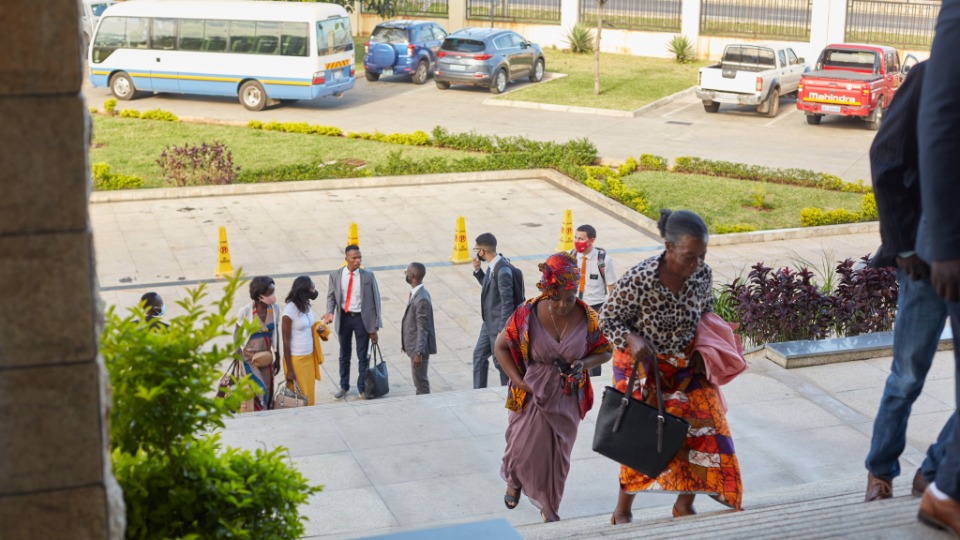
Maputo-Mozambique-2022
Church members arrive for a meeting with Elder Ronald A. Rasband and other leaders in Maputo, Mozambique, on Wednesday, May 18, 2022. The Church of Jesus Christ of Latter-day Saints.© 2022 by Intellectual Reserve, Inc. All rights reserved.
The Church was officially recognized in Angola in 1992, and in 1996 the first branch, located in Luanda — the country’s capital — was organized. In 2018, the first stake was organized. This year, on July 9, Church leaders broke ground in Angola for the first Latter-day Saint meetinghouse. For 37 years, members have been meeting in borrowed or rented buildings. The new building, announced in 2016, is expected to be completed in 2023.
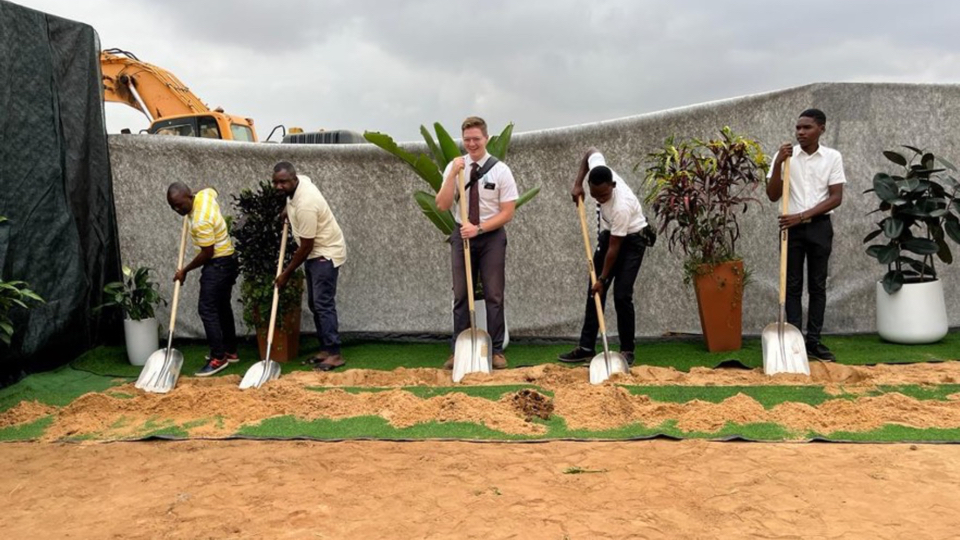
Jovens-locais-e-missionarios-de-tempo-integral-participando-do-momento-historico-de-9-de-julho-de-2022
Local youth and full-time missionaries from the Angola Luanda Mission participate in the groundbreaking for Angola’s first chapel on July 9, 2022.
Four other Portuguese-speaking countries — Guinea-Bissau, East Timor, São Tomé and Príncipe, and Equatorial Guinea — still do not have official Church data.
From Brazil to the World: Leaders That Made a Difference
From the “curtain” that was opened to Brazil, the reversal of the empire-colony relationship took place when Brazilian missionaries began to be sent to Portugal and Africa, starting in the 1970s. Other leaders, already familiar with Brazilian Portuguese, also began to lead in Portuguese-speaking regions. Among them was William Grant Bangerter, who served his mission in Brazil from 1939 to 1941. Subsequently, from 1958 to 1963, he was the president of the Brazilian Mission, and in 1974, he was called as president of the first mission in Portugal.
Another contribution of great impact to the advancement of the gospel in Luso-Afro-Brazilian nations pertains to one of President Frederick G. Williams’ descendants.
The former president of the Brazil São Paulo Interlagos Mission, former president of the Recife Brazil Temple, and former professor of Portuguese at Brigham Young University, Frederick G. Williams contributed in many ways to the establishment of the Church in Mozambique.
He directed seven BYU study abroad programs over a 10-year period, participating with students in splits with the missionaries, as well as with the growth of two very small branches that led to the establishment of the Mozambique mission and stakes.
And the fruits of leaders, members and many others can be seen with the 11 temples dedicated and another nine announced or under construction in the Luso-Afro-Brazilian world.
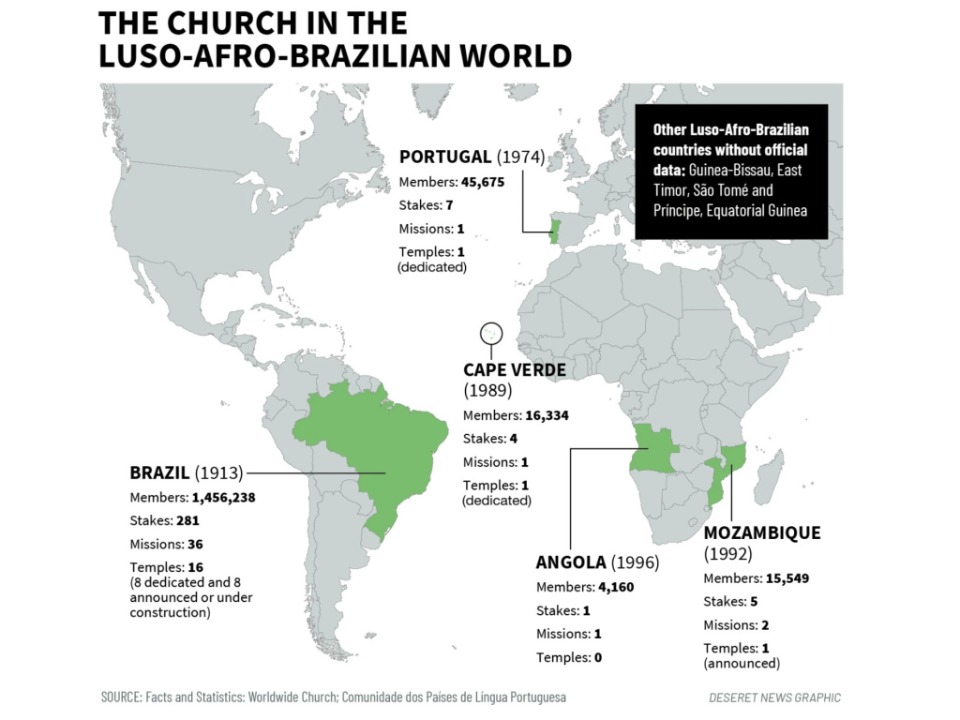
Brazil-Church-7
The Church in the Luso-Afro-Brazilian world by numbers. Graphic by Aaron Thorup, courtesy of Church News.Copyright 2022 Deseret News Publishing Company.Copyright 2022 Deseret News Publishing Company.